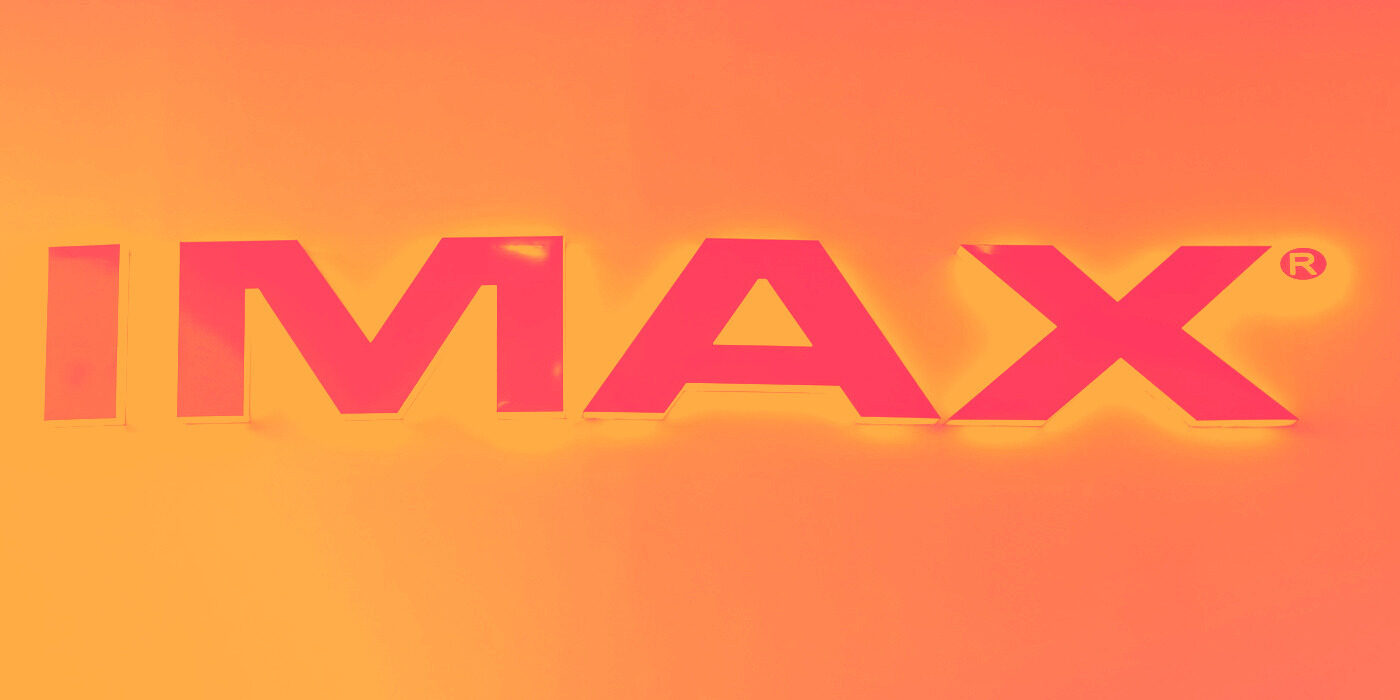
Premium cinema technology company IMAX (NYSE: IMAX) reported revenue ahead of Wall Street’s expectations in Q2 CY2025, with sales up 3.1% year on year to $91.68 million. Its non-GAAP profit of $0.26 per share was 15.1% above analysts’ consensus estimates.
Is now the time to buy IMAX? Find out by accessing our full research report, it’s free.
IMAX (IMAX) Q2 CY2025 Highlights:
- Revenue: $91.68 million vs analyst estimates of $90.79 million (3.1% year-on-year growth, 1% beat)
- Adjusted EPS: $0.26 vs analyst estimates of $0.23 (15.1% beat)
- Adjusted EBITDA: $39.06 million vs analyst estimates of $33.4 million (42.6% margin, 16.9% beat)
- Operating Margin: 15.6%, up from 3.2% in the same quarter last year
- Free Cash Flow Margin: 36.9%, up from 29.8% in the same quarter last year
- Market Capitalization: $1.56 billion
“IMAX delivered outstanding financial results in the Second Quarter as the key drivers of our business worked in concert, with strong network growth worldwide, record box office in North America, and impressive market share gains driven by more releases filmed with our technology than ever,” said Rich Gelfond, CEO of IMAX.
Company Overview
Originally developed for World Expo '67 in Montreal as an innovative projection system, IMAX (NYSE: IMAX) provides proprietary large-format cinema technology and systems that deliver immersive movie experiences with enhanced image quality and sound.
Revenue Growth
A company’s long-term sales performance is one signal of its overall quality. Even a bad business can shine for one or two quarters, but a top-tier one grows for years.
With $362.5 million in revenue over the past 12 months, IMAX is a small player in the business services space, which sometimes brings disadvantages compared to larger competitors benefiting from economies of scale and numerous distribution channels. On the bright side, it can grow faster because it has more room to expand.
As you can see below, IMAX grew its sales at a solid 7.3% compounded annual growth rate over the last five years. This shows it had high demand, a useful starting point for our analysis.
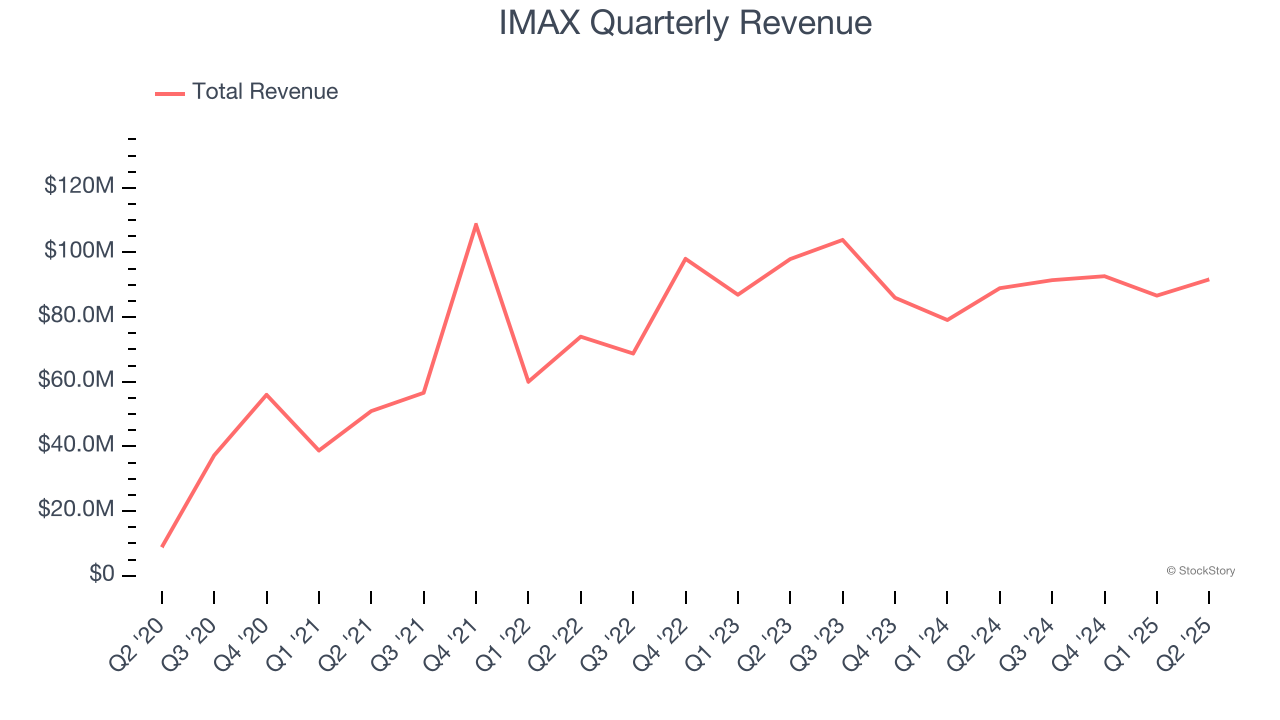
We at StockStory place the most emphasis on long-term growth, but within business services, a half-decade historical view may miss recent innovations or disruptive industry trends. IMAX’s recent performance shows its demand has slowed as its annualized revenue growth of 1.5% over the last two years was below its five-year trend. 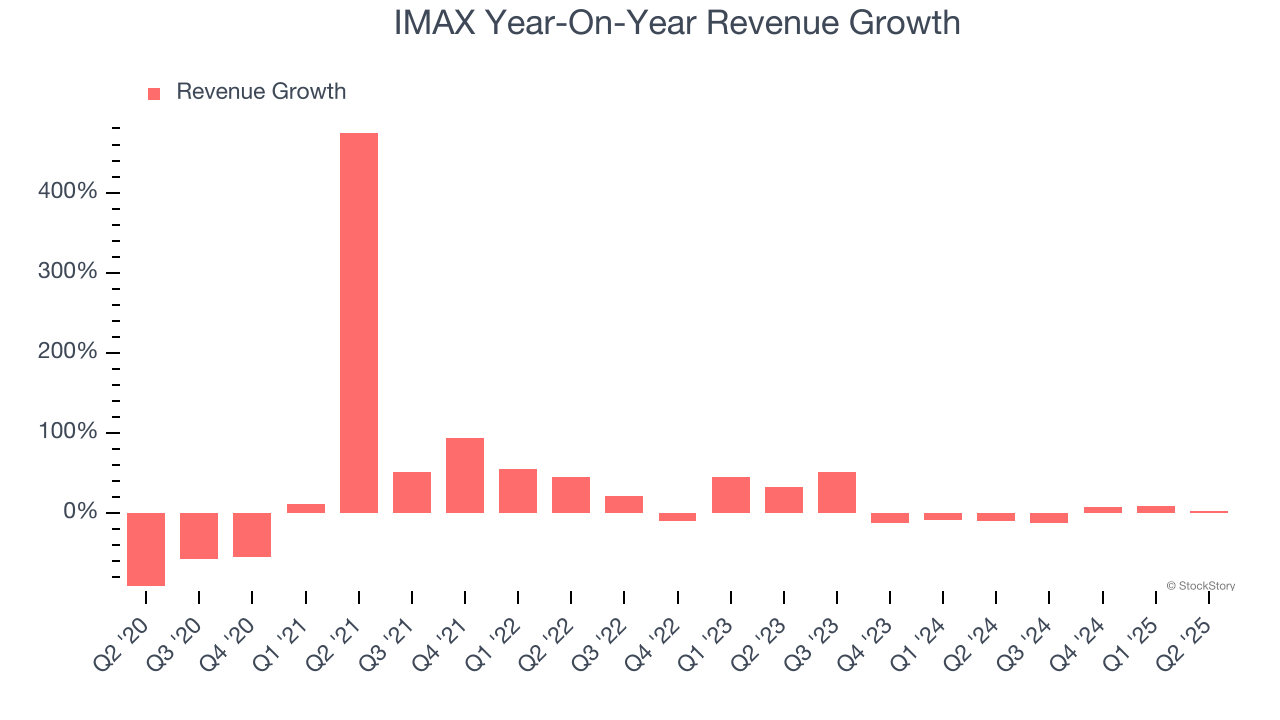
This quarter, IMAX reported modest year-on-year revenue growth of 3.1% but beat Wall Street’s estimates by 1%.
Looking ahead, sell-side analysts expect revenue to grow 13.1% over the next 12 months, an improvement versus the last two years. This projection is healthy and implies its newer products and services will catalyze better top-line performance.
Software is eating the world and there is virtually no industry left that has been untouched by it. That drives increasing demand for tools helping software developers do their jobs, whether it be monitoring critical cloud infrastructure, integrating audio and video functionality, or ensuring smooth content streaming. Click here to access a free report on our 3 favorite stocks to play this generational megatrend.
Operating Margin
Operating margin is an important measure of profitability as it shows the portion of revenue left after accounting for all core expenses – everything from the cost of goods sold to advertising and wages. It’s also useful for comparing profitability across companies with different levels of debt and tax rates because it excludes interest and taxes.
IMAX was profitable over the last five years but held back by its large cost base. Its average operating margin of 5.8% was weak for a business services business.
On the plus side, IMAX’s operating margin rose by 47 percentage points over the last five years, as its sales growth gave it immense operating leverage.
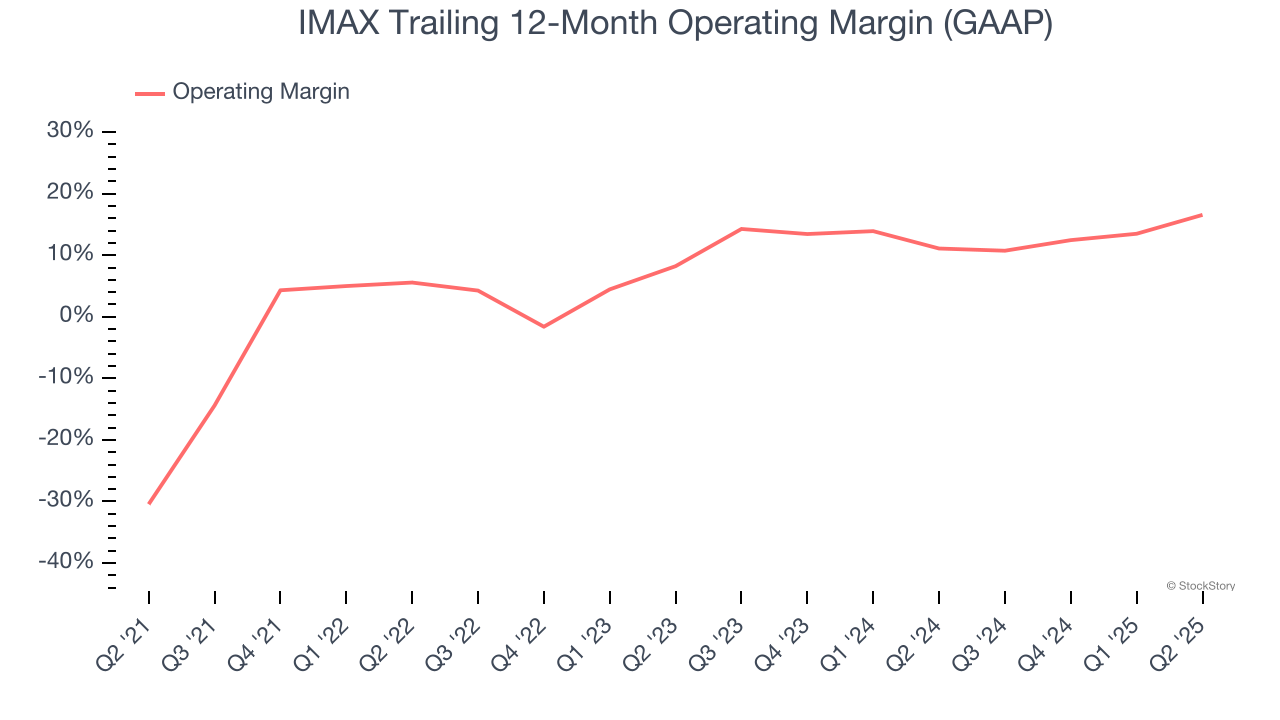
This quarter, IMAX generated an operating margin profit margin of 15.6%, up 12.4 percentage points year on year. This increase was a welcome development and shows it was more efficient.
Earnings Per Share
Revenue trends explain a company’s historical growth, but the long-term change in earnings per share (EPS) points to the profitability of that growth – for example, a company could inflate its sales through excessive spending on advertising and promotions.
IMAX’s full-year EPS flipped from negative to positive over the last five years. This is a good sign and shows it’s at an inflection point.
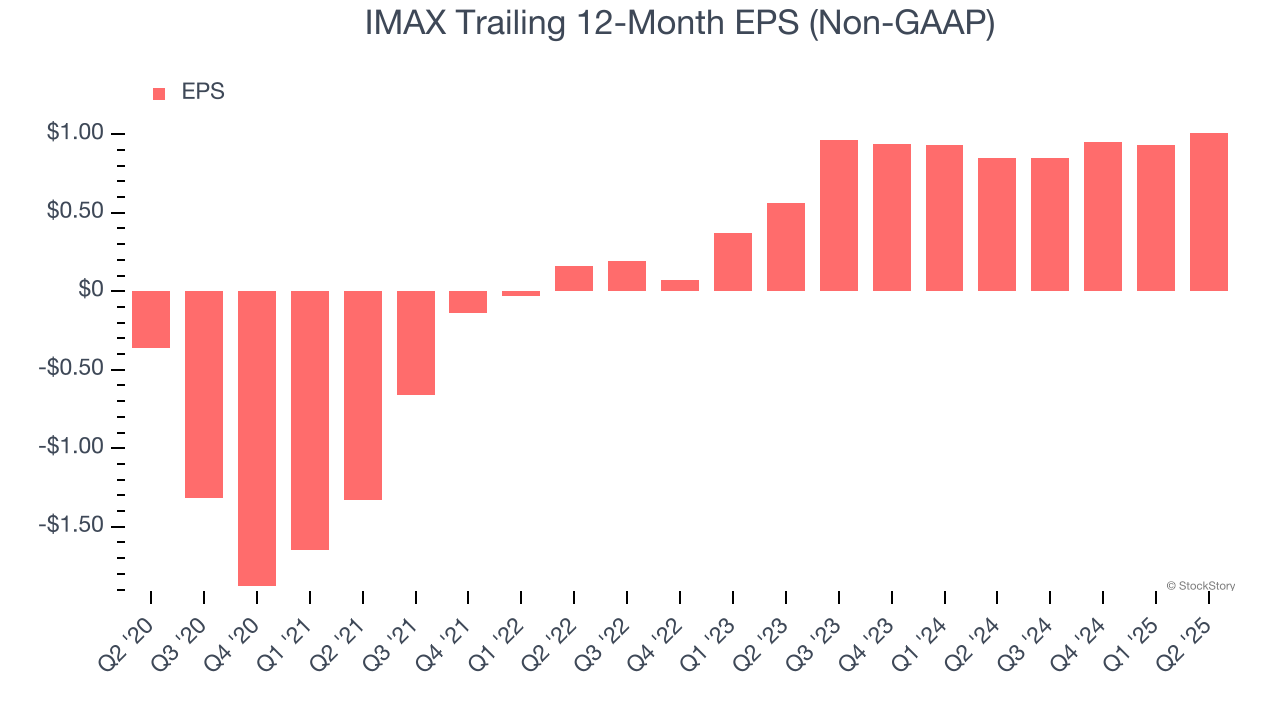
Like with revenue, we analyze EPS over a shorter period to see if we are missing a change in the business.
IMAX’s EPS grew at an astounding 34.3% compounded annual growth rate over the last two years, higher than its 1.5% annualized revenue growth. This tells us the company became more profitable on a per-share basis as it expanded.
We can take a deeper look into IMAX’s earnings quality to better understand the drivers of its performance. IMAX’s operating margin has expanded by 1.1 percentage points over the last two years. This was the most relevant factor (aside from the revenue impact) behind its higher earnings; interest expenses and taxes can also affect EPS but don’t tell us as much about a company’s fundamentals.
In Q2, IMAX reported EPS at $0.26, up from $0.18 in the same quarter last year. This print easily cleared analysts’ estimates, and shareholders should be content with the results. Over the next 12 months, Wall Street expects IMAX’s full-year EPS of $1.01 to grow 27.3%.
Key Takeaways from IMAX’s Q2 Results
We were impressed by how significantly IMAX blew past analysts’ EPS expectations this quarter. We were also happy its revenue narrowly outperformed Wall Street’s estimates. Zooming out, we think this was a good print with some key areas of upside. The stock traded up 1.4% to $29.45 immediately following the results.
Indeed, IMAX had a rock-solid quarterly earnings result, but is this stock a good investment here? The latest quarter does matter, but not nearly as much as longer-term fundamentals and valuation, when deciding if the stock is a buy. We cover that in our actionable full research report which you can read here, it’s free.







